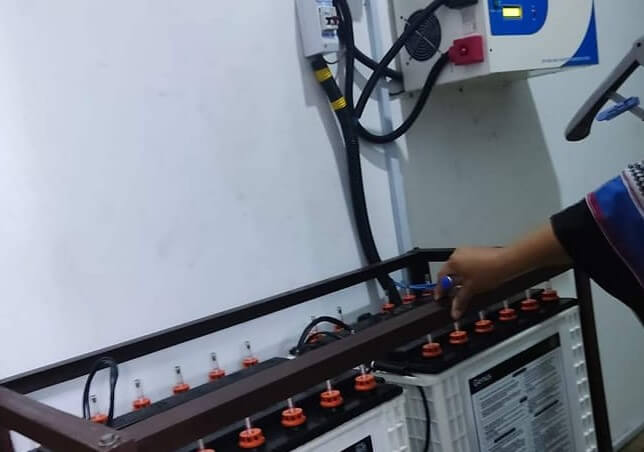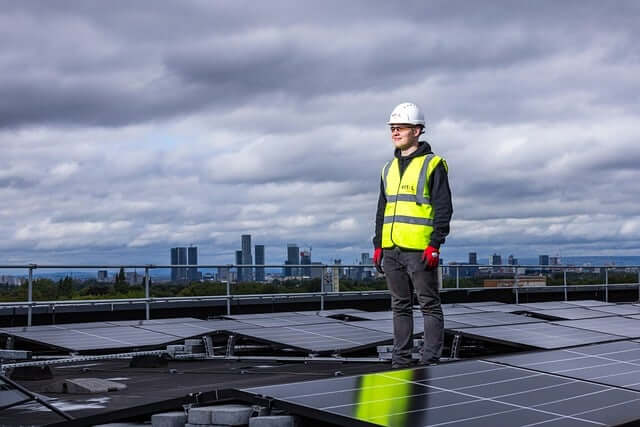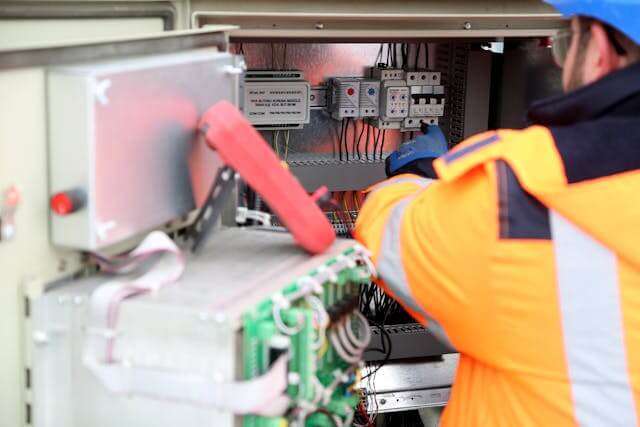There are crucial factors to consider before you choose an inverter battery to buy. Although there are many , choosing the right inverter battery is crucial. It is super important because inverter batteries directly affect how well your backup power system works.
In this guide about “Five Important Things to consider when choosing an Inverter Battery,” we’ll look at key points that matter in making your decision.
Picking the right one doesn’t just mean better performance. It ensures your power backup setup fits your needs perfectly. Let’s explore these crucial factors together to help you make the best choice for your inverter battery needs.
Battery Capacity
The capacity of a battery is measured in ampere-hours (Ah). It dictates how much power it can store. To determine the right capacity for your needs, calculate the total load you want to support and for how long. Let’s say you want to run a few lights, a fan, and a television for about four hours. You’ll need to add up the total wattage of these appliances and then find a battery that can support this load for the desired duration. Remember, a higher-capacity battery might seem expensive initially but can be more cost-effective in the long run. The capacity to handle more appliances over a longer period makes it invaluable.
Battery Type
There are mainly three types of batteries available for inverters. These are lead-acid, gel, and lithium-ion. Each has its pros and cons.
Lead-acid batteries have two main variants: flooded lead-acid batteries and sealed lead-acid batteries. Flooded batteries are more budget-friendly with a prolonged lifespan. They require regular maintenance for optimal performance. Conversely, sealed lead-acid batteries give maintenance-free operation and enhanced safety, albeit at a higher cost.
One noteworthy advantage of lead-acid batteries is their widespread availability. They are easily accessible from various suppliers and retailers. This accessibility makes lead-acid batteries a fitting choice for many households. However, it’s crucial to acknowledge their limitations which include lower energy density compared to newer technologies. This means a potentially shorter lifespan and reduced power output. Moreover, they require proper disposal measures due to the presence of toxic materials, posing environmental risks if mishandled.
If you are seeking to escape the challenges of dealing with battery acid, frequent maintenance, and water level checks, maintenance-free batteries are the best for you. These batteries are substitutes for traditional lead-acid types. They have a sealed design which prevents electrolyte loss.
Maintenance-free gel batteries offer several advantages. Among other benefits, there is the absence of maintenance requirements, environmental friendliness, and suitability for indoor use. However, they are pricier than standard lead-acid batteries and have a relatively shorter lifespan.
Then there are the tubular batteries. These types are engineered to withstand challenging conditions. They excel in regions prone to frequent power outages and voltage fluctuations, making them ideal for our clime and for residential use. Their unique design ensures exceptional performance and reliability.
Choosing the right type depends on your budget, the level of maintenance you’re willing to commit to, and the performance you expect.
Also Read: How Much Money Can You Really Save with Solar Panels?
Inverter Compatibility
Not all batteries are compatible with all inverters. Before purchasing, ensure that the battery you choose is compatible with your inverter’s specifications. The voltage of the battery should match the inverter’s voltage requirement. Using an incompatible battery can lead to poor performance and could even damage the inverter or the battery itself.
Brand and Warranty
The brand of the battery can tell you a lot about its quality and reliability. Choosing a brand like ours with a good reputation in the market, positive reviews from users, and a strong after-sales service network will keep your mind at rest. You should also look at the warranty period offered by the manufacturer. A longer warranty period is an indication of the manufacturer’s confidence in their product. It also gives you peace of mind knowing that you’re covered in case of defects or issues.
Price and After-Sales Service
Finally, one of the factors to consider when choosing an inverter battery is the price and the after-sales service. It’s tempting to go for the cheapest option, but that might hurt in the long run. Evaluate the total cost of ownership, which includes the purchase price, installation costs, maintenance costs, and the expected lifespan. A slightly more expensive battery with lower maintenance costs and a longer lifespan could offer better value for your money.
Installation and Maintenance Requirements for Inverter Batteries
While some inverter battery setups might seem straightforward, we recommend professional installation. This guarantees safety and efficiency. Experts like us properly handle the electrical aspects, recommend the best location for your battery and ensure that the setup meets all safety standards.
Location:The chosen location for your inverter battery should be easily accessible, well-ventilated, and safe from extreme temperatures. Batteries can emit gasses. So, an area with good airflow is crucial to dissipate any harmful emissions. Also, a good location ensures the temperature around the battery is stable.
Wiring and Connections: Ensure all wiring is correctly done, with no loose connections. Incorrect or loose wiring can lead to power losses, inefficiencies, or even hazardous situations. Use the correct cable sizes as recommended by the battery and inverter manufacturer to avoid overheating and ensure optimal performance.
Maintenance Requirements
Regular Cleaning: Dust and debris can accumulate on battery terminals. When this happens, it leads to poor conductivity and potential corrosion. Regular cleaning with a dry cloth or a brush can prevent build-up. For corrosion, a mixture of baking soda and water can be gently applied to neutralize acid build-up before wiping it off.
Water Levels in Lead-Acid Batteries: If you’re using a lead-acid battery, keep an eye on the water level. Distilled water should be added whenever the level falls below the recommended threshold. Avoid overfilling as it can lead to acid spillage during charging.
Checking Connections: Periodically check all battery connections to ensure they’re tight and free from corrosion. Loose connections can cause sparking and reduce the efficiency of your power backup system.
Monitoring Battery Health: Use a battery management system (BMS) or a multimeter to regularly check the voltage and overall health of your battery. This can help you catch issues early before they lead a failure. Symptoms of a failing battery include longer charging times, reduced backup time, and swelling of the battery case.
Avoid Deep Discharges: To extend the lifespan of your battery, avoid completely discharging it. Deep discharges can significantly reduce the number of charge cycles a battery can undergo. Most batteries perform best when discharged only to 50-70% of their capacity before recharging.
Temperature Considerations: Batteries are sensitive to temperature extremes. So, keep it at a stable, moderate temperature. Doing this will help maintain its efficiency and lifespan. Extreme cold can reduce battery capacity, while extreme heat can accelerate aging.
These installation and maintenance guidelines will help your inverter battery operate safely and efficiently for as long as possible. Regular maintenance will also extend the life of your battery. Meaning your inverter system is always ready when you need it most.
Also Read: How Installing Solar Can Increase the Value of Your Property
Conclusion
The five most important factors to consider when choosing your inverter battery are initial cost, efficiency, lifespan, compatibility, and maintenance requirements.
While lithium-ion batteries offer high efficiency, longer lifespans, and greater DoD, their upfront cost is higher than lead-acid batteries.
However, the total cost of ownership may be lower for lithium-ion batteries due to their longer service life and lower maintenance needs.
So check your power backup needs, budget, and expectations for sustainability and reliability. Doing this will help you choose an inverter battery system that will provide dependable power backup.










